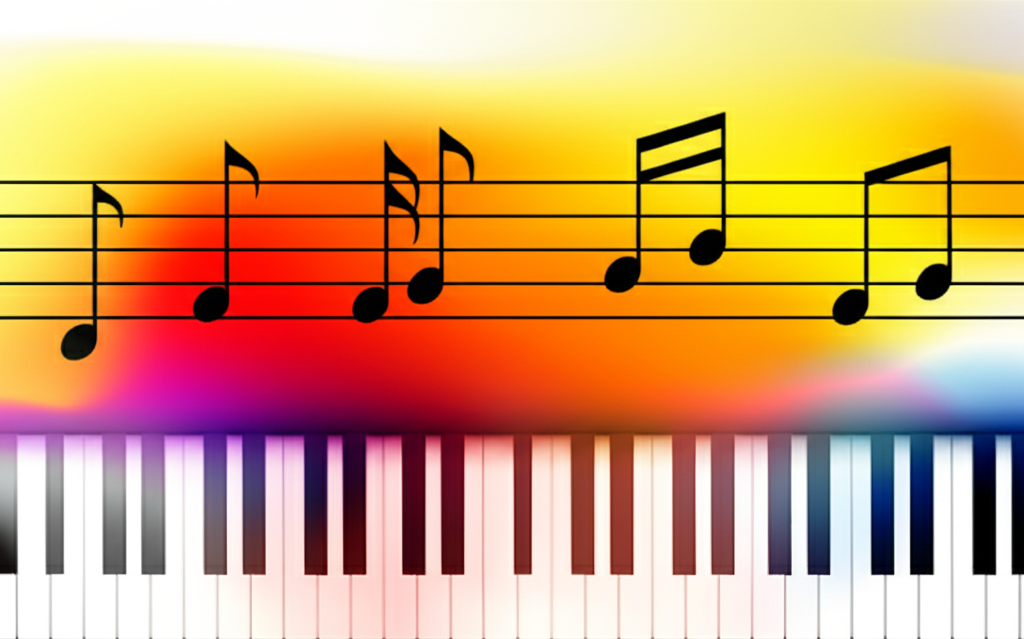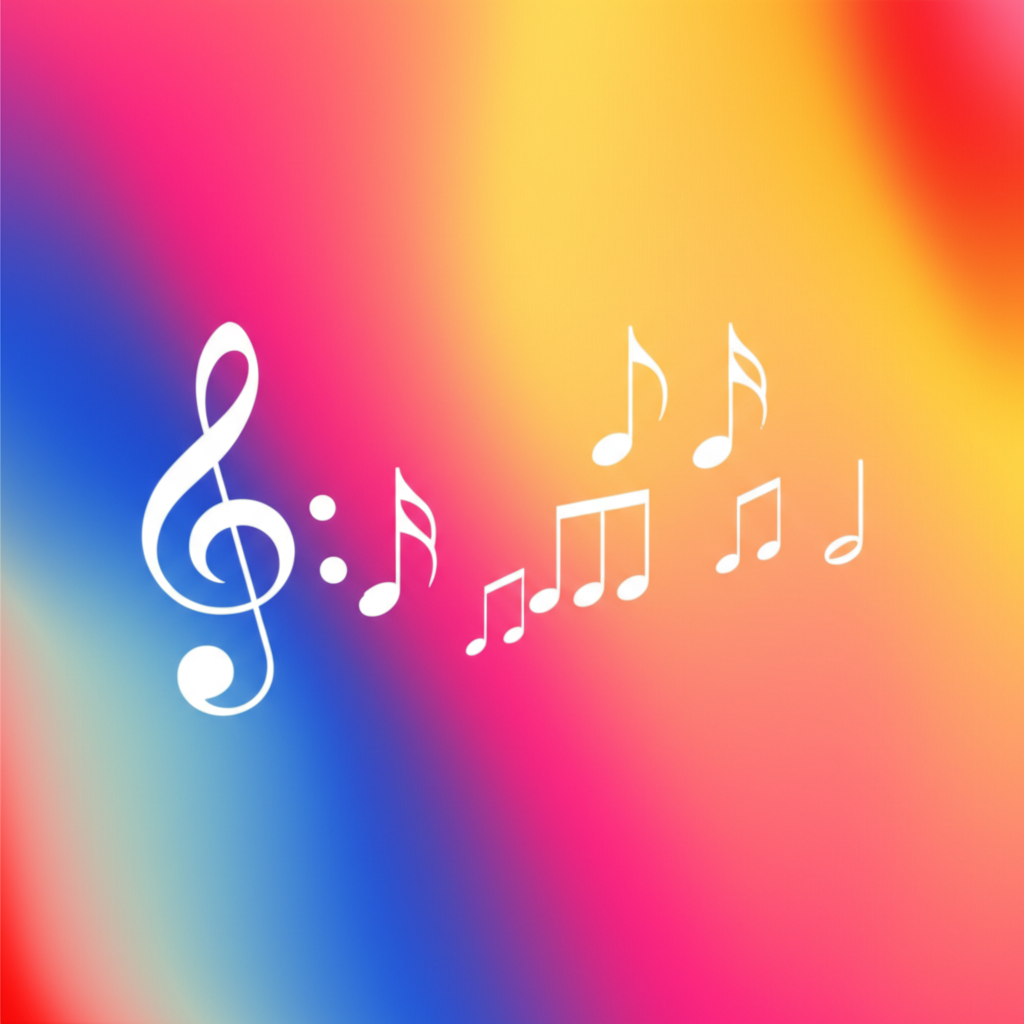
American Note Names: Understanding A B C D E F G System

b4n1
June 14, 2025, 7:03 p.m.
American Note Names: Understanding A B C D E F G System
Summary:
The American note naming system uses seven letters - A, B, C, D, E, F, and G - to identify musical pitches. This alphabetical system is the foundation of Western music notation and is essential for communicating about music across the English-speaking world and beyond.
Keywords:
American note names, musical alphabet, ABCDEFG, note naming system, music notation, pitch names, Western music, letter names
Introduction:
When musicians talk about notes, they need a common language to communicate which specific pitches they mean. The American note naming system provides this language using the seven letters A, B, C, D, E, F, and G. This simple yet powerful system allows musicians worldwide to share musical ideas clearly and precisely, whether they're reading sheet music, playing by ear, or composing new songs.
The Seven Letter Names:
The American system uses only seven letters that repeat in a continuous cycle. After G comes A again, then B, C, D, E, F, G, and so on. Each letter represents a specific pitch relationship to the others.
The Musical Alphabet in Order:
Why These Seven Letters?:
The choice of A through G comes from historical development of Western music theory. These seven letters represent the seven different pitch classes that form the foundation of Western musical scales. The pattern repeats because after seven steps, we reach a note that sounds very similar to where we started - this is called an octave.
The Pattern Repeats:
One of the most important concepts to understand is that these seven letters repeat infinitely in both directions. Going up: A-B-C-D-E-F-G-A-B-C-D-E-F-G... Going down: ...G-F-E-D-C-B-A-G-F-E-D-C-B-A...
Two Octaves of Note Names:
Starting Point - Why Not Start with A?:
While the alphabet starts with A, music theory often starts explanations with C because C major is the simplest scale - it uses only the white keys on a piano with no sharps or flats. However, the note A is historically significant as it's often used as the tuning reference (A = 440 Hz).
Visual Reference - Piano Keyboard:
On a piano keyboard, you can see this pattern clearly. The white keys represent the seven letter names (A, B, C, D, E, F, G), and this pattern repeats across the entire keyboard. The black keys represent sharps and flats, which we'll explore in other lessons.
Sharps and Flats:
Between most of the letter names, there are additional pitches called sharps (#) and flats (♭). For example, between A and B, there's A# (A-sharp) or B♭ (B-flat) - they're the same pitch with different names depending on musical context.
Complete Chromatic Pattern:
All twelve pitches in an octave:
A - A#/B♭ - B - C - C#/D♭ - D - D#/E♭ - E - F - F#/G♭ - G - G#/A♭
Practical Applications:
Understanding letter names helps you:
- Read chord symbols (like "Play a C major chord")
- Communicate with other musicians
- Tune instruments
- Understand music theory concepts
- Navigate sheet music more easily
International Usage:
While called the "American" system, these letter names are actually used throughout the English-speaking world and in many international contexts. Other countries have their own traditional naming systems (like Do-Re-Mi in some European countries), but the A-G system has become widely adopted globally.
Different Octaves:
Since the letters repeat, musicians need a way to specify which octave they mean. Different systems exist, but commonly you'll see numbers added (like C4 for middle C) or different cases used in some notation systems.
Same Letter, Different Octaves:
Memory Tricks:
To remember the order, many students use phrases like:
- "All Boys Can Do Everything For Good" (A-B-C-D-E-F-G)
- "A Big Cat Drinks Enormous Fish Gratefully"
- Or simply remember it's the alphabet starting from A, but only using seven letters
Connection to Other Systems:
The A-G system corresponds to other naming systems. For example, in the Do-Re-Mi system (solfege), C=Do, D=Re, E=Mi, F=Fa, G=Sol, A=La, B=Ti. Understanding these connections helps when encountering different musical traditions.
Instrument Applications:
Different instruments relate to these letter names in various ways:
- Piano: White keys are the seven letter names
- Guitar: Each string can be tuned to specific letter names
- Wind instruments: Fingerings correspond to these pitches
- Voice: Singers learn to identify and produce these specific pitches
Historical Development:
The use of letters to name pitches has ancient roots, but the modern A-G system developed over centuries of musical evolution. Medieval musicians used different systems, and the standardization we know today emerged gradually as music became more formalized and widespread.
Digital Age Applications:
In today's digital music world, the A-G system is essential for music software, apps, and electronic instruments. Whether you're using a smartphone tuner app or professional recording software, understanding these letter names is crucial for modern music-making.
Fun Facts:
The note A is traditionally used for tuning because it has a frequency of 440 Hz (vibrations per second) in modern standard tuning. Before standardization, different regions used different tuning frequencies! The pattern A-B-C-D-E-F-G contains both whole steps and half steps - the foundation for all Western scales and chords.
Common Mistakes to Avoid:
Remember that there's no H in the musical alphabet (some European systems use H instead of B). After G comes A again, not H. Also, the letters don't necessarily go in alphabetical order when you're playing scales - for example, the C major scale goes C-D-E-F-G-A-B-C.
Conclusions:
The American note naming system using A-B-C-D-E-F-G provides the essential vocabulary for Western music. This simple seven-letter system, repeating infinitely, gives musicians a precise way to communicate about pitch and forms the foundation for all further music theory study. Whether you're a complete beginner or advancing in your musical journey, mastering these letter names is fundamental to your musical literacy and communication with other musicians.
References:
Benward, Bruce & Saker, Marilyn (2008). Music in Theory and Practice. McGraw-Hill.
Kostka, Stefan & Payne, Dorothy (2012). Tonal Harmony. McGraw-Hill.
Laitz, Steven G. (2015). The Complete Musician. Oxford University Press.
Clendinning, Jane & Marvin, Elizabeth (2016). The Musician's Guide to Theory and Analysis. W. W. Norton.



